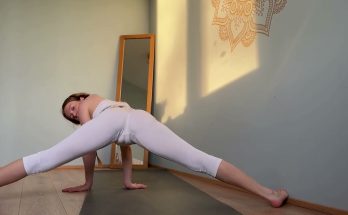Back pain is one of the most common health complaints, and it can affect anyone, regardless of age or fitness level. Whether it’s due to poor posture, long hours of sitting, or simply the wear and tear of daily life, back pain can significantly limit your mobility and quality of life. Yoga offers a gentle and effective way to alleviate lower back pain, helping to release tension, strengthen supporting muscles, and improve overall spinal health. In 2025, more people are discovering the power of yoga for back pain relief, and it’s becoming a go-to solution for those seeking natural, non-invasive relief.
One of the reasons yoga is so effective for lower back pain is that it emphasizes mindful movement and breathing. Rather than pushing your body beyond its limits, yoga focuses on creating space in the body and nurturing balance. In a world where most people are constantly rushing, yoga allows us to slow down and listen to our bodies. For those dealing with back pain, this mindfulness can be a game-changer, allowing you to tune into areas of tension and gently release them through movement.
A key benefit of yoga for back pain is that it helps to stretch and open the muscles in the back, hips, and legs. Tight muscles, especially in the hips and hamstrings, can contribute to back discomfort by pulling on the lower back and creating imbalances. By incorporating stretches that target these areas, yoga helps lengthen the muscles and relieve the pressure that can lead to pain. A few simple poses like Downward-Facing Dog and Child’s Pose can work wonders in releasing tightness and restoring flexibility.
However, yoga isn’t just about stretching. It also helps to strengthen the muscles that support the spine. Poses like Plank and Cobra work to engage the core and back muscles, which are essential for maintaining good posture and protecting the spine from strain. By building strength in these areas, yoga can prevent future back pain and help you move through your day with more ease and stability.
For beginners, it’s important to start with gentle, accessible poses that won’t strain the body further. Poses like Cat-Cow, Bridge Pose, and Sphinx are excellent for targeting the lower back while maintaining a safe, supported practice. These foundational movements can be modified with props like cushions or blocks to provide extra support where needed. As you build strength and flexibility, you can gradually incorporate more advanced poses to deepen your practice.
Breathwork is another key aspect of yoga that can aid in back pain relief. Focusing on deep, diaphragmatic breathing helps activate the parasympathetic nervous system, which promotes relaxation and reduces muscle tension. By pairing breath with movement, you can increase the effectiveness of each pose, allowing the body to relax into the stretch and release built-up tension in the muscles. This combination of breath and movement makes yoga a holistic practice for both physical and mental well-being.
Yoga also emphasizes the importance of alignment. When performing poses, it’s crucial to ensure that the spine remains in a neutral position to avoid further strain. Working with a knowledgeable instructor, whether in person or through video guidance, can help you develop proper alignment and avoid habits that may exacerbate your back pain. Good alignment is the foundation for a safe and effective practice, and it can be the key to relieving discomfort and preventing future injuries.
One of the most significant advantages of yoga for back pain relief is that it can be done from the comfort of your own home. With minimal equipment—just a mat and some comfortable clothing—you can create a peaceful space to practice. Incorporating yoga into your daily routine doesn’t require a lot of time either. Just 15-20 minutes of targeted stretches and strengthening poses can make a significant difference over time.
In 2025, many yoga teachers and online platforms are offering specific classes and routines designed for back pain relief. These videos and tutorials are perfect for beginners, providing step-by-step guidance on how to perform each pose safely and effectively. With regular practice, many people experience a noticeable reduction in pain and an improvement in mobility. It’s a great way to take control of your health and address the root causes of discomfort.
As you continue your yoga practice, remember that consistency is key. While it’s tempting to push for immediate results, the most effective approach to back pain relief is a gradual, steady practice. Over time, your muscles will become stronger and more flexible, and your posture will improve. By committing to a regular yoga practice, you not only relieve back pain but also invest in long-term health and wellness.


